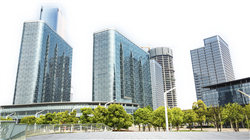University certificate
The world's largest artificial intelligence faculty”
Why study at TECH?
With this 100% online Postgraduate diploma, you will master the use of optimization algorithms to maximize the efficiency of spatial distribution, resource use and functionality of architectural projects”

A new study conducted by the World Economic Forum reveals that the implementation of Artificial Intelligence-based simulation technologies in architecture can reduce the costs associated with the conservation of historic buildings by up to 40% and improve the operational efficiency of urban projects. Therefore, professionals need to skillfully handle these tools both to design and preserve built spaces, as well as to protect built environments in the face of various environmental and human challenges.
In this scenario, TECH is launching a pioneering program in Simulation, Optimization and Preservation of Spaces through Artificial Intelligence. Designed by recognized experts in this field, the academic itinerary will delve into aspects ranging from the most sophisticated techniques to optimize the energy efficiency of infrastructures or bioclimatic design strategies to the use of sustainable materials. The curriculum will also delve into the use of AnyLogic to model the dynamics of space use in urban and architectural environments. In addition, the program will include a disruptive module to delve into the future perspectives on emerging technologies of Artificial Intelligence. Thanks to this, graduates will obtain advanced competencies to handle Artificial Intelligence tools to improve the efficiency of architectural projects and maximize their sustainability considerably.
Moreover, the program's methodology is based on TECH's Relearning method, which guarantees the exhaustive assimilation of complex concepts. It is worth noting that the only thing architects need to access this Virtual Campus is a device with Internet access, where they will find a variety of multimedia resources (such as explanatory videos, interactive summaries or specialized readings). Undoubtedly, an immersive experience that will allow experts to experience a significant leap in quality in their careers.
You will expand your knowledge by analyzing real cases and solving complex situations in simulated learning environments”
This Postgraduate diploma in Simulation, Optimization and Preservation of Spaces Using Artificial Intelligence contains the most complete and up-to-date program on the market. The most important features include:
- Development of practical cases presented by experts in Artificial Intelligence
- The graphic, schematic, and practical contents with which they are created, provide practical information on the disciplines that are essential for professional practice
- Practical exercises where self-assessment can be used to improve learning
- Its special emphasis on innovative methodologies
- Theoretical lessons, questions to the expert, debate forums on controversial topics, and individual reflection assignments
- Content that is accessible from any fixed or portable device with an Internet connection
Are you looking to use state-of-the-art architectural simulation software to anticipate the performance of structures under different scenarios? Achieve it with this program in just 6 months”
The program’s teaching staff includes professionals from the sector who contribute their work experience to this specializing program, as well as renowned specialists from leading societies and prestigious universities.
The multimedia content, developed with the latest educational technology, will provide the professional with situated and contextual learning, i.e., a simulated environment that will provide immersive education programmed to learn in real situations.
This program is designed around Problem-Based Learning, whereby the professional must try to solve the different professional practice situations that arise during the course. For this purpose, students will be assisted by an innovative interactive video system created by renowned experts in the field of educational coaching with extensive experience.
You will delve into the latest trends in heritage preservation and restoration of historic spaces"

You will learn at your own pace and without time constraints thanks to the revolutionary Relearning system that TECH puts at your disposal"
Syllabus
This university program has been designed by recognized experts in Simulation, Optimization and Preservation of Spaces Using Artificial Intelligence. The curriculum will delve into issues such as the application of SketchUp to obtain detailed energy analysis, sustainable materials assisted with Cityzenit or intelligent energy management with Google DeepMind's Energy. In addition, the syllabus will provide graduates with the most advanced simulation techniques with MATLAB, which will allow them to model the energy consumption of a building under different climatic conditions. In addition, the didactic materials will analyze how Artificial Intelligence can be used to prevent the deterioration of historic structures.

You will apply Machine Learning and predictive analytics techniques in architectural planning to significantly improve decision making”
Module 1. Space Optimization and Energy Efficiency with AI
1.1. Optimizing Spaces with Autodesk Revit and AI
1.1.1. Using Autodesk Revit and AI for Spatial Optimization and Energy Efficiency
1.1.2. Advanced Techniques for Improving Energy Efficiency in Architectural Designs
1.1.3. Case Studies of Successful Projects Combining Autodesk Revit with AI
1.2. Analysis of Energy Efficiency Metrics and Data with SketchUp and Trimble
1.2.1. Applying SketchUp and Trimble Tools for Detailed Energy Analysis
1.2.2. Developing Energy Efficiency Metrics Using AI
1.2.3. Strategies for Setting Energy Efficiency Goals for Architectural Projects
1.3. Bioclimatic Design and AI-Optimized Solar Orientation
1.3.1. AI-Assisted Bioclimatic Design Strategies for Maximizing Energy Efficiency
1.3.2. Examples of Buildings Using AI-Guided Design to Optimize Thermal Comfort
1.3.3. Practical Applications of AI in Solar Orientation and Passive Design
1.4. AI-Assisted Sustainable Materials and Technologies with Cityzenit
1.4.1. Innovation in Sustainable Materials Supported by AI Analysis
1.4.2. Using AI to Develop and Apply Recycled and Low-Environmental-Impact Materials
1.4.3. Study of Projects Using Renewable Energy Systems Integrated with AI
1.5. Urban Planning and Energy Efficiency with WattPredictor and AI
1.5.1. AI Strategies for Energy Efficiency in Urban Design
1.5.2. Implementing WattPredictor to Optimize Energy Use in Public Spaces
1.5.3. Successful Cases of Cities Using AI to Improve Urban Sustainability
1.6. Intelligent Energy Management with Google DeepMind's Energy
1.6.1. Applications of DeepMind Technologies for Energy Management
1.6.2. Implementing AI for Energy Consumption Optimization
1.6.3. Assessment of Cases Where AI Has Transformed Energy Management in Communities and Buildings
1.7. AI-Assisted Energy Efficiency Certifications and Regulations
1.7.1. Using AI to Ensure Compliance with Energy Efficiency Standards (LEED, BREEAM)
1.7.2. AI Tools for Energy Audit and Certification of Projects
1.7.3. Impact of Regulations on AI-Supported Sustainable Architecture
1.8. Life Cycle Assessment and Environmental Footprint with Enernoc
1.8.1. AI Integration for Life Cycle Analysis of Building Materials
1.8.2. Using Enernoc to Assess Carbon Footprint and Sustainability
1.8.3. Model Projects Using AI for Advanced Environmental Assessments
1.9. Energy Efficiency Education and Awareness with Verdigris
1.9.1. Role of AI in Energy Efficiency Education and Awareness
1.9.2. Using Verdigris to Teach Sustainable Practices to Architects and Designers
1.9.3. Initiatives and Educational Programs Using AI to Promote a Cultural Change Toward Sustainability
1.10. Future of Space Optimization and Energy Efficiency with ENBALA
1.10.1. Exploration of Future Challenges and the Evolution of Energy Efficiency Technologies
1.10.2. Emerging Trends in AI for Spatial and Energy Optimization
1.10.3. Perspectives on How AI Will Continue to Transform Architecture and Urban Design
Module 2. Simulation and Predictive Modeling with AI
2.1. Advanced Simulation Techniques with MATLAB in Architecture
2.1.1. Using MATLAB for Advanced Architectural Simulations
2.1.2. Integrating Predictive Modeling and Big Data Analytics
2.1.3. Case Studies Where MATLAB Has Been Fundamental in Architectural Simulation
2.2. Advanced Structural Analysis with ANSYS
2.2.1. Implementing ANSYS for Advanced Structural Simulations in Architectural Projects
2.2.2. Integrating Predictive Models to Evaluate Structural Safety and Durability
2.2.3. Projects Highlighting the Use of Structural Simulations in High Performance Architecture
2.3. Modeling Space Use and Human Dynamics with AnyLogic
2.3.1. Using AnyLogic to Model the Dynamics of Space Use and Human Mobility
2.3.2. Applying AI to Predict and Improve the Efficiency of Space Use in Urban and Architectural Environments
2.3.3. Case Studies Showing How Simulation Influences Urban and Architectural Planning
2.4. Predictive Modeling with TensorFlow in Urban Planning
2.4.1. Implementing TensorFlow for Modeling Urban Dynamics and Structural Behavior
2.4.2. Using AI to Predict Future Outcomes in City Design
2.4.3. Examples of How Predictive Modeling Influences Urban Planning and Design
2.5. Predictive Modeling and Generative Design with GenerativeComponents
2.5.1. Using GenerativeComponents to Merge Predictive Modeling and Generative Design
2.5.2. Applying Machine Learning Algorithms to Create Innovative and Efficient Designs
2.5.3. Examples of Architectural Projects that Have Optimized Their Design Using These Advanced Technologies
2.6. Simulation of Environmental Impact and Sustainability with COMSOL
2.6.1. Applying COMSOL for Environmental Simulations in Large-Scale Projects
2.6.2. Using AI to Analyze and Improve the Environmental Impact of Buildings
2.6.3. Projects that Show How Simulation Contributes to Sustainability
2.7. Simulation of Environmental Performance with COMSOL
2.7.1. Applying COMSOL Multiphysics for Environmental and Thermal Performance Simulations
2.7.2. Using AI to Optimize Design Based on Daylighting and Acoustics Simulations
2.7.3. Examples of Successful Implementations That Have Improved Sustainability and Comfort
2.8. Innovation in Simulation and Predictive Modeling
2.8.1. Exploration of Emerging Technologies and Their Impact on Simulation and Modeling
2.8.2. Discussion of How AI Is Changing Simulation Capabilities in Architecture
2.8.3. Evaluation of Future Tools and Their Potential Applications in Architectural Design
2.9. Simulation of Construction Processes with CityEngine
2.9.1. Applying CityEngine to Simulate Construction Sequences and Optimize On-Site Workflows
2.9.2. AI Integration for Modeling Construction Logistics and Coordinating Activities in Real-Time
2.9.3. Case Studies Showing Improved Construction Efficiency and Safety through Advanced Simulations
2.10. Challenges and Future of Simulation and Predictive Modeling
2.10.1. Assessment of Current Challenges in Simulation and Predictive Modeling in Architecture
2.10.2. Emerging Trends and the Future of These Technologies in Architectural Practice
2.10.3. Discussion on the Impact of Continued Innovation in Simulation and Predictive Modeling in Architecture and Construction
Module 3. Heritage Preservation and Restoration with AI
3.1. AI Technologies in Heritage Restoration with Photogrammetry
3.1.1. Using Photogrammetry and AI for Accurate Heritage Documentation and Restoration
3.1.2. Practical Applications in the Restoration of Historic Buildings
3.1.3. Outstanding Projects Combining Advanced Techniques and Respect for Authenticity
3.2. Predictive Analysis for Conservation with Laser Scanning
3.2.1. Implementing Laser Scanning and Predictive Analytics in Heritage Conservation
3.2.2. Using AI to Detect and Prevent Deterioration in Historic Structures
3.2.3. Examples of How These Technologies Have Improved Accuracy and Efficiency in Conservation
3.3. Cultural Heritage Management with Virtual Reconstruction
3.3.1. Applying AI-Assisted Virtual Reconstruction Techniques
3.3.2. Strategies for Digital Heritage Management and Preservation
3.3.3. Success Stories in the Use of Virtual Re-Enactment for Education and Preservation
3.4. Preventive Conservation and AI-Assisted Maintenance
3.4.1. Using AI Technologies to Develop Strategies for Preventive Conservation and Maintenance of Historic Buildings
3.4.2. Implementing AI-Based Monitoring Systems for Early Detection of Structural Problems
3.4.3. Examples of How AI Contributes to the Long-Term Conservation of Cultural Heritage
3.5. Digital Documentation and BIM in Heritage Preservation
3.5.1. Applying Advanced Digital Documentation Techniques, including BIM and Augmented Reality, Assisted by AI
3.5.2. Using BIM Models for Efficient Heritage Management and Restoration
3.5.3. Case Studies on the Integration of Digital Documentation in Restoration Projects
3.6. AI-Assisted Preservation Policies and Management
3.6.1. Using AI-Based Tools for Management and Policy Making in Heritage Preservation
3.6.2. Strategies for Integrating AI into Conservation-Related Decision-Making
3.6.3. Discussion of How AI Can Improve Collaboration Among Institutions for Heritage Preservation
3.7. Ethics and Responsibility in AI Restoration and Preservation
3.7.1. Ethical Considerations in the Application of AI in Heritage Restoration
3.7.2. Debate on the Balance between Technological Innovation and Respect for Historical Authenticity
3.7.3. Examples of How AI Can Be Used Responsibly in Heritage Restoration
3.8. Innovation and the Future of Heritage Preservation with AI
3.8.1. Perspectives on Emerging AI Technologies and Their Application in Heritage Preservation
3.8.2. Assessing the Potential of AI to Transform Restoration and Conservation
3.8.3. Discussion on the Future of Heritage Preservation in an Era of Rapid Technological Innovation
3.9. Cultural Heritage Education and Awareness with GIS
3.9.1. Importance of Public Education and Awareness in Cultural Heritage Preservation with GIS
3.9.2. Using Geographical Information Systems (GIS) to Promote the Valuation and Knowledge of Cultural Heritage
3.9.3. Successful Education and Outreach Initiatives Using Technology to Teach about Cultural Heritage
3.10. Challenges and the Future of Heritage Preservation and Restoration
3.10.1. Identification of Current Challenges in Cultural Heritage Preservation
3.10.2. Role of Technological Innovation and AI in Future Conservation and Restoration Practices
3.10.3. Perspectives on How Technology Will Transform Heritage Preservation in the Coming Decades

A university program designed based on the latest trends in Simulation, Optimization and Preservation of Spaces Using Artificial Intelligence to guarantee you a successful learning experience. Enroll now!”
Postgraduate Diploma in Simulation, Optimization and Preservation of Spaces Using Artificial Intelligence
The ability to optimize and preserve spaces, both urban and natural, is increasingly important to meet the challenges of population growth, sustainable urban development and environmental preservation. For this reason, TECH offers the Postgraduate Diploma program in Simulation, Optimization and Preservation of Spaces through Artificial Intelligence, a 100% online academic alternative that allows professionals to acquire advanced knowledge in the use of artificial intelligence for the efficient management of these spaces. This postgraduate course focuses on the application of artificial intelligence technologies for the simulation and predictive analysis of physical spaces, allowing the identification of patterns and innovative solutions in the planning and management of spatial resources. Through advanced simulation techniques, the aim is to optimize the use of the territory, improve efficiency in the distribution of resources and minimize environmental impacts. With the use of intelligent algorithms, students learn to model scenarios that maximize the efficiency of urban infrastructures, as well as the preservation of natural spaces.
Specialize in the use of AI to preserve natural spaces
Throughout these online classes, participants learn advanced simulation techniques that allow them to evaluate multiple variables in real time, facilitating more accurate and efficient decision making. In addition, this program gives them the opportunity to specialize in the use of tools that integrate data analysis and optimization of spatial processes, all under a sustainable approach. Thanks to TECH Global University's innovative Relearning method, professionals can reinforce their knowledge in a continuous and flexible manner. Without fixed schedules, this system allows students to adapt their learning to their own pace, achieving effective and lasting learning. This program is ideal for architects, urban planners, engineers and professionals interested in using artificial intelligence to transform the way they manage, simulate and preserve spaces, thus ensuring more efficient and sustainable development in key areas such as urbanism, territorial planning and environmental conservation.







